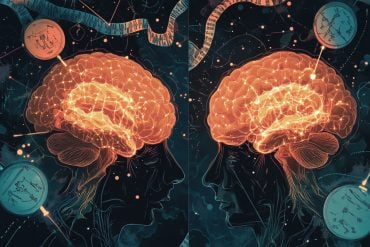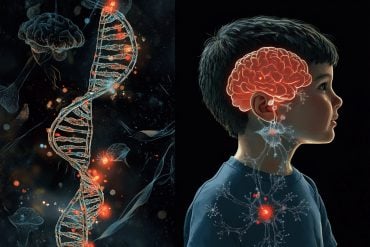A study conducted at Carnegie Mellon University investigated the brain’s neural activity during learned behavior and found that the brain makes mistakes because it applies incorrect inner beliefs, or internal models, about how the world works. The research suggests that when the brain makes a mistake, it actually thinks that it is making the correct decision—its neural signals are consistent with its inner beliefs, but not with what is happening in the real world.
“Our brains are constantly trying to predict how the world works. We do this by building internal models through experience and learning when we interact with the world,” says Steven Chase, an assistant professor in the Department of Biomedical Engineering and the Center for the Neural Basis of Cognition. “However, it has not yet been possible to track how these internal models affect instant-by-instant behavioral decisions.”
The researchers conducted an experiment using a brain-machine interface, a device that allows the brain to control a computer cursor using thought alone. By studying the brain’s activity, the researchers could see how the brain thinks an action should be performed. The researchers report that the majority of errors made were caused by a mismatch between the subjects’ internal models and reality. In addition, they found that internal models realigned to better match reality during the course of learning. “To our knowledge, this is the most detailed representation of a brain’s inner beliefs that has been identified to date,” says Byron Yu, an associate professor in the Department of Electrical and Computer Engineering and the Department of Biomedical Engineering.

The results from this study have wide-reaching applications. Notably, the results have the potential to improve the performance and reliability of current brain-machine interfaces that assist paralyzed patients and amputees. On a more fundamental level, the results can inform our understanding of how the brain learns: for example, how we acquire knowledge or develop new skills. Because the study allows for a better understanding of why the brain makes mistakes, the results also can be a powerful tool to improve how we learn to perform new tasks. “For example, a doctor may be trying to learn how to use a new robotic surgical device,” explains Matthew Golub, postdoctoral fellow in the Department of Electrical and Computer Engineering. “If you can take a snapshot of how the doctor thinks the device works, you can identify mismatch in his or her internal model and more efficiently train the doctor to use the device.”
The study was conducted as part of Carnegie Mellon’s BrainHub, a university initiative that focuses on how the structure and activity of the brain give rise to complex behaviors. The team included Golub, Yu, and Chase. Research funding was provided by The National Institute of Child Health and Human Development, the PA Department of Health Research, and the National Science Foundation Integrative Graduate Education and Research Traineeship (IGERT) program.
Funding: Research funding was provided by The National Institute of Child Health and Human Development, the PA Department of Health Research, and the National Science Foundation Integrative Graduate Education and Research Traineeship (IGERT) program.
Source: Byron Yu – Carnegie Mellon University
Image Credit: The image is adapted from the Carnegie Mellon University press release
Original Research: Abstract for “Internal models for interpreting neural population activity during sensorimotor control” by Matthew D Golub, Byron M Yu, and Steven M Chase ineLife. Published online December 8 2015 doi:10.7554/eLife.10015
Abstract
Internal models for interpreting neural population activity during sensorimotor control
To successfully guide limb movements, the brain takes in sensory information about the limb, internally tracks the state of the limb, and produces appropriate motor commands. It is widely believed that this process uses an internal model, which describes our prior beliefs about how the limb responds to motor commands. Here, we leveraged a brain-machine interface (BMI) paradigm in rhesus monkeys and novel statistical analyses of neural population activity to gain insight into moment-by-moment internal model computations. We discovered that a mismatch between subjects’ internal models and the actual BMI explains roughly 65% of movement errors, as well as long-standing deficiencies in BMI speed control. We then used the internal models to characterize how the neural population activity changes during BMI learning. More broadly, this work provides an approach for interpreting neural population activity in the context of how prior beliefs guide the transformation of sensory input to motor output.
“Internal models for interpreting neural population activity during sensorimotor control” by Matthew D Golub, Byron M Yu, and Steven M Chase ineLife. Published online December 8 2015 doi:10.7554/eLife.10015







